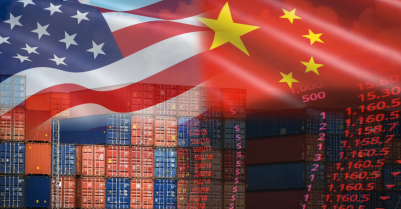-
View article
 #Economy
#EconomySouth Korea: a year after the political crisis, markets are buying the promise of stability
2025/12/17
- #Eco-trends
- 2020/02/25
- 0
-
8
Can flexible packaging do without plastic?

According to the European directive on packaging, all packaging placed on the market (whether glass, plastic or paper) will have to be reusable or recyclable, with a target of recycling 55% of plastic packaging by 2030 and a commitment to incorporate 10 million metric tons of recycled plastic into packaging by 2025. Furthermore, the European directive on single-use plastics has prohibited the use of ten products found in marine litter. Cotton bud sticks, cutlery, plates, straws and stirrers are banned with effect from 2020, with the other five families of products to follow from 2021.
These European directives have been over-transposed in France via the circular economy roadmap (feuille de route pour l’économic circulaire or FREC) and subsequently the Act on the circular economy and combating waste, passed on 30 January and published in the Official Journal on 11 February. The Act sets an ambitious target of recycling 100% of plastic by 2025 and reincorporating a million metric tons of plastic, including 440,000 metric tons of plastic packaging.
This is a sizeable challenge: globally, a mere 9% of plastic waste is recycled, and 40% of all plastic ends up as waste. It should, however, be noted that plastic only accounts for a small proportion of the uses of fossil commodities (between 2% and 10%, depending on the method used to assess the lifecycle).
The Act also includes a new amendment passed at the beginning of December on eliminating single-use plastic packaging by 2040. This amendment could have a huge impact, since it would mean banning all non-reusable plastic waste, including shampoo bottles, toothpaste tubes, pallet wrap, bin bags, household cleaning product bottles, etc.
France’s plastic packaging sector continues to transition towards green growth
According to Elipso, the French national federation of plastic and flexible packaging firms, 1.8 million metric tons of plastic packaging were made from virgin commodities in 2019 – i.e. 82% of all plastic packaging produced, down 5% from 2018.
At the same time, plastic packaging made from recycled commodities increased 20% to 320,000 metric tons, accounting for 14.5% of plastic packaging. Sorting instructions are being extended to increase waste collection (yellow bins for all packaging) and new collection and recycling processes are being developed.
Plastic packaging made from biosourced commodities has increased significantly to 79,000 metric tons (up 80%) but still only accounts for 3.5% of all plastic packaging. Meanwhile, the organic waste collection process appears complex and expensive.
In light of these challenges, industry players used the Etiq&Pack conference to present the latest technological and chemical innovations
The “packaging 4.0” concept of eco-designed products (i.e. where the design takes into account the end of the product’s lifecycle) made using more flexible production lines responds to current megatrends (urbanisation and demographic change, e-commerce, personalisation and sustainable development), as does the development of recyclable mono-material packaging made from polyethylene (PE) or polypropylene (PP) consisting of multiple layers and barrier solutions that are themselves completely recyclable.
Laser cutting techniques are helping optimise consumption of materials and reduce waste. Meanwhile, plastic recycling, facilitated by the use of new laminating and sealing media and inks, is evolving around three key processes: mechanical (involving physical separation of polymer complexes), chemical or pyrolysis-based (producing commodities and liquid fuels).
At the same time, the use of substitute materials like bioplastics is expanding, but their market remains limited with prices two to three times higher than conventional plastics.
Biosourced packaging, made from plant matter (maize, potato, beetroot, etc.) or organic waste and residue, has a smaller carbon footprint but competes with food production.
Most biodegradable plastic packaging degrades under very specific industrial composting conditions; examples include bags made from organic waste used to collect waste in Switzerland and a bagging film developed by an Israeli start-up using plant matter.
Another option is the recyclable and more accessible cellulose fibre, as used in Carlsberg’s plans for a paper beer bottle under development since 2015; leak testing is in progress using fine barrier film made from recycled polyethylene terephtalate (rPET) and biosourced polyethylene furanoate (PEF).
Whatever innovations are studied, it is imperative that plans take into account the end of a product’s lifecycle and that packaging solutions are compatible with existing recycling processes. While only 26% of plastic packaging is currently recycled in France (vs. 60% in Germany), two thirds of it polyethylene terephtalate (PET), this is because most of it consists of multi-material layers that are hard to recycle, or for which no specific recycling process exists.
Pascale MEGARDON-AUZEPY- pascale.megardon-auzepy@credit-agricole-sa.fr








